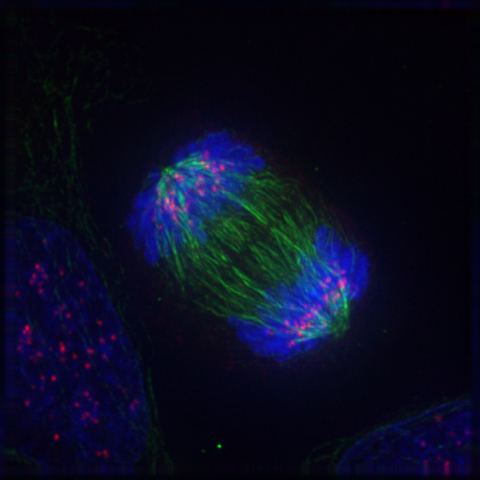Entrez 125488 | Ensembl ENSG00000168234 | |
 | ||
Aliases TTC39C, C18orf17, HsT2697, tetratricopeptide repeat domain 39C External IDs MGI: 1919997 HomoloGene: 124438 GeneCards: TTC39C | ||
Tetratricopeptide repeat protein 39C is a protein that in humans is encoded by the TTC39C gene. TTC39C is one of three TTC39. Its function is currently unknown; however, there is some evidence suggesting that it plays a role in anaphase. It also contains a relatively well-characterized structural motif called the tetratricopeptide repeat (TPR).
Contents
Gene
TTC39C is located on the long arm of human chromosome 18 at 18q11.2. Its most common aliases are FLJ33761, C18orf17, and HsT2697.
Protein
The TTC39C protein is 583 amino acids long, and appears to be localized to the cytoplasm of the cell based on its predicted secondary structure It has three isoforms, the longest of which is transcript variant 1. It contains three tetratricopeptide repeats, as well as the domain of unknown function DUF3808. The protein product has a molecular weight of 65.9 kDa and an isoelectric point of 6.584. There are several predicted phosphorylation, acetylation, and palmitoylation sites, which are shown in the table below. Its whole predicted secondary structure is composed almost entirely of helices, and forms a tertiary structure that is predicted to match the structure of the cut9 protein in yeast with 100% accuracy and 85% coverage.
Homology
The TTC39C protein is over 50% conserved in most vertebrates, and has conservation levels as low as about 24% in invertebrates. At least one ortholog and several homologs have also been identified in fungi. No orthologs have been identified in plants. Several of its orthologs are shown in the table below.
TTC39C has two paralogs from the TTC39 family: TTC39A,and TTC39B, which are located on chromosome 1, at 1p32.3 and chromosome 9, at 9p22.3 respectively. TTC39B has been associated with the management of HDL cholesterol, and may be involved in the prevention of cardiovascular disease
The promoter region controlling expression of transcript variant 1 begins approximately 952 bases upstream of the start codon, and includes the entire 5' UTR. Several possible transcription factor binding sites have been identified using the program El Dorado including the CCCTC binding factor and a site for CTCF, an insultator protein that binds CCCTC. This transcription factor is associated with a number of functions including organization of chromatin. There were also several sites that appear to be the general transcription factor TFIIB, and both E2F and E2F transcription factor binding sites. The E2F transcription factors are involved in mediating the cell cycle, which could be a potential link to the hypothesized role of TTC39C in anaphase. Several microarray studies of humans, dogs and mice have provided evidence that TTC39C is most highly expressed in the liver. It exhibits relatively high expression in all tissues, and had a percentile rank above 50% in all tissues except in kidney, spinal cord, and skeletal muscle samples of humans.
Function
The function of TTC39C is currently unknown. However, one of its structural motifs, the tetratricopeptide repeat is relatively well characterized, and has been shown to be active primarily in four categories of protein-protein interactions: interacting with molecular chaperones, mediating the start of anaphase during cell division, transcription repression, and the transport of proteins. Of these four areas of functionality, the most evidence exists for its involvement in the initiation of anaphase. Two of the three possible interacting proteins identified by STRING play a role in anaphase. Finally, the protein that had a structure that appears to perfectly match 85% of the TTC39C sequence is involved in anaphase in the yeast, Schizosaccharomyces pombe. However, the role of TTC39C in anaphase must be confirmed through additional studies.
Textmining studies have identified several proteins that TTC39C may interact with. These protein-protein interactions have not been confirmed; however, two of the identified proteins, AGBL1 and HAUS4, are likely candidates due to their roles in anaphase. Additional potential protein-protein interactions were identified for TTC39C in mice; however, there is no apparent connection to TTC39C besides coexpression.
